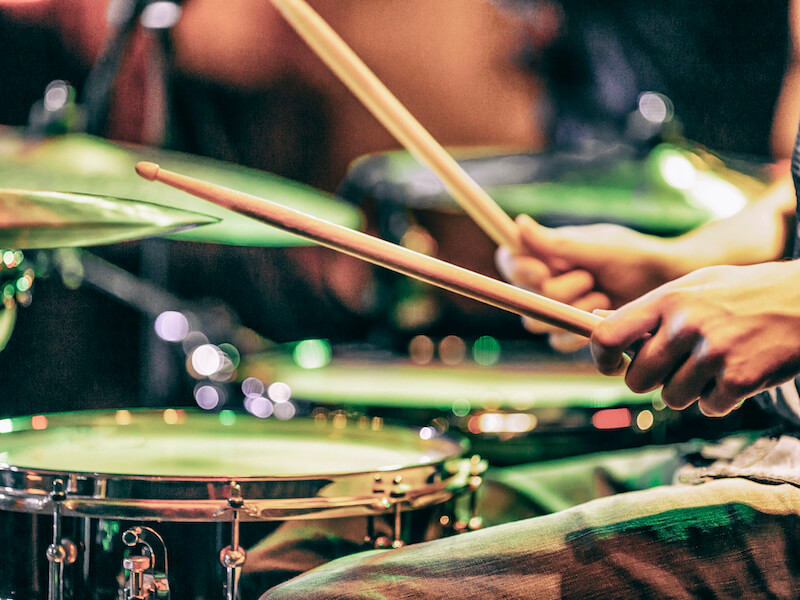
Musicians are awesome! They bring so much joy to our lives with their songs. The drawback is that music is almost always loud, in fact, many people prefer it that way. Since musicians subject themselves to loud music on a daily basis, their hearing is at an increased risk of being damaged.
As you grow older, you’ll still want to be capable of enjoying your favorite songs whether you’re a musician or not. The key to having an extended successful career, for musicians, is protecting their ears. For the rest of us, hearing protection is the secret to a lifetime of musical enjoyment and enrichment.
Music is surprisingly loud
If you ask most individuals if a jet engine is loud, they’ll likely say yes.
Is music actually that loud? People may not be so fast to answer that question if you ask them if a violin or acoustic guitar is loud. Imagine their surprise when they discover the reality: That can also be very loud music! Even classical music can reach fairly high volumes that can easily harm your hearing.
A violin, for instance, can produce sounds well over 90 dB. That’s around as noisy as a leaf blower. In Europe, for example, they have regulations that require ear protection for anyone who works in a setting where there is noise louder than 85 dB.
And if you’re working with music on a daily basis, consistent exposure to that sort of volume, particularly without ear protection, can severely harm your hearing over time.
Can you safeguard your ears from noise damage?
Okay, musicians who want to maintain their hearing for years to come need to protect their hearing. So how can musicians keep enjoying their music while also safeguarding their hearing?
Well, here are a couple of easy things musicians can do:
- Take breaks: Like any part of your body, your ears can become fatigued and may need to get a little rest. So give yourself “hearing breaks” frequently. This will help prevent your ears from becoming overpowered with sound (and damage). Duration is nearly as important as volume with regard to hearing health. The difference between the perfect amount of stimulation and too much can depend upon taking frequent breaks.
- Track your volume: Everyone knows the old saying “knowledge is power”. So being aware of volume levels of noises around you will help you protect your hearing. Monitoring the volume on amps and PA systems is part of it. But you can also keep track of day-to-day volume levels of external noises using a volume meter app that you can download on your cellphone. You will want to make some changes if the meter regularly reads above 85 dB.
Wear hearing protection
Of course, the single most beneficial thing you can do to safeguard your ears is easy: wearing hearing protection of some kind. Many musicians are unwilling to wear hearing protection because they’re concerned it will effect the quality of sound they hear, in addition to muting the volume. But depending on what type of hearing protection you use, that might not always be true.
- Ear plugs made primarily for musicians: Most people are likely familiar with disposable ear plugs. They don’t always fit well, but they do reliably block a lot of sound. They aren’t hard to get, don’t cost much, and can be disposed of easily. For musicians, they aren’t the best solution. But earplugs just for musicians are also available for a little more money. These earplugs use fancy manufacturing methods (mostly they’re made out of very specific materials and are designed to fit comfortably in the ear) to maintain audio clarity while diminishing the noise you experience by around 20dB. For musicians who require a moderate amount of protection on a budget, this option is perfect.
- Electronic earplugs: The same general functionality found in non-electronic earplugs can be found in electronic earplugs. Most of the sound will be blocked by the earplug itself. What you hear will instead be routed in by the earplug itself. This option is perfect for those who work in particularly noisy settings, and who are looking for more options in terms of controlling volume.
- In-ear monitors: Electronics are a major part of modern music. An in-ear monitor takes those electronic signals and sends them directly to a device placed inside of your ear (called an in-ear monitor). Most monitors are small speakers that fit snugly and block out most sound while playing sounds you want to hear at safe volumes. This means you can hear exactly how you sound, at a volume you control. In-ear monitors are practical for people who work chiefly with electronically amplified instruments.
Safeguard your hearing, and protect your career
It’s better to start safeguarding your hearing early, before any significant harm occurs. Everybody can protect their hearing and future with ear protection solutions at all price points. Don’t forget that you’re investing in your career by utilizing hearing protection for musicians. It’s one way to ensure you’ll be making incredible music for many years (maybe even decades) to come!
Give us a call so we can help you get started.
